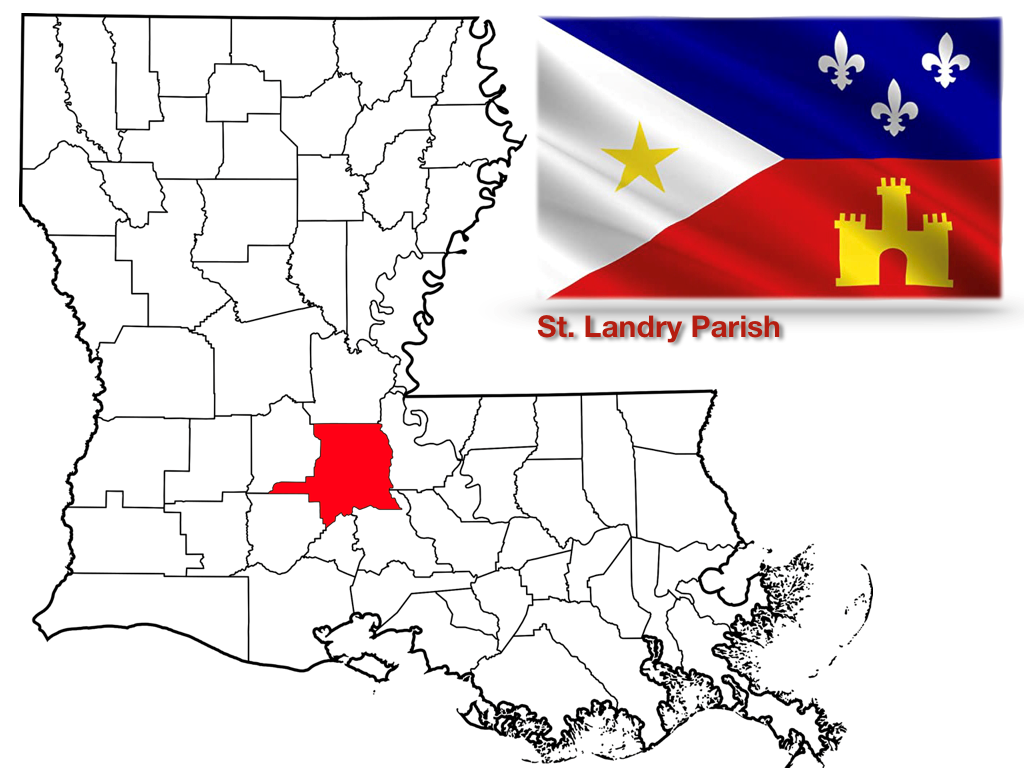
About 12 kilometres separate the city of Carencro in the suburb of Lafayette and Bayou Carencro which is located in St. Landry Parish northeast. Between the Carencro and Teche bayous, the Carencro Prairie stretches over several square kilometres, an area suitable for raising cattle to supply New Orleans with meat, and for celebrating Courir de Mardi Gras. It is here that the first settler of the Carencro region, an Acadian named Louis Pierre Arceneaux (originally from Beaubassin in Acadia, now Nova Scotia), came to settle as herdsman in 1765. Five years later, in 1770, the second governor of Spanish Louisiana, General Alejandro O’Reilly (an Irishman), decreed that “a square land of 42 arpents (35 acres) by 42 arpents could be granted to those who have more than 100 cows, a few sheep and horses, and two servants for their care”. It is important to know that in the previous year (1769), Juan Kelly and Eduardo Nugent visited the Carencro region on behalf of the administration and reported to the governor that “the inhabitants maintain everything imaginable in matters of domestic animals, especially cows, horses and sheep”. According to the 1803 census, 32 Acadian families were at the time the backbone of the region’s economic and cultural development. There were, among others, the Arceneaux, Babineaux, Benoit, Bernard, Breaux, Carmouche, Caruthers, Comeaux, Cormier, Guilbeaux, Hebert, Holway, LeBlanc, Melançon, Mire, Mouton, Pierre, Prejean, Roger, St-Julien, Savoie, and Thibodeaux. By 1810 the number of families did grow to fifty, representing a growth rate of 56 percent.
The aforementioned government decree (regarding the supply of Louisiana beef, as opposed to imported beef) was part of the fiscal and economic policies of the time. Concerned about the lack of sufficient funds to run the colony, the governor then focused his attention on the Royal Treasury’s excessive import expenditures, specifically the large quantities of food imported from Havana. It was the governor’s belief that Louisiana generally had no problem finding sustenance. As a result, O’Reilly decided to cut expenses by reducing the importation of unnecessary food. He also found that large quantities of food stocks imported by his predecessor had deteriorated, causing considerable losses to the treasury. Following a rigorous inspection of salted meat and flour available, he ordered the discarding of all unsuitable foodstuffs. What was still edible was returned to Havana for refunds. Louisiana did receive a credit in reduction of its spending, among several other budget measures.
The Carencro’s pioneers

According to the Genealogical Dictionary of Arceneaux, the first family member in Acadia was Pierre Arsenault (Pierre I), born in Rochefort in west-central France around 1646. He arrived in Acadia shortly after the 1671 census. The name Arsenault was very common in the Poitou-Charentes region of France in the 17th century. Pierre I actively participated in the founding of the Beaubassin colony located on the isthmus of Chignectou near the salty marshes of Tantramar on the banks of the Mésagouèche River. From 1765, several of his descendants, refugees from the Acadian deportation, began to arrive in Louisiana and to settle along navigable bayous. Apparently, the Spanish moss in their country of adoption won over the newly arrived inhabitants who brought with them the Courir de Mardi Gras.
There are numerous name variations within this large family:
ARCENEAUX ARCENAULT ARCENEAU ARCHENAU ARCHENAUD ARCHENAULD ARCHENAULT ARCHENAUT ARCHENAUX ARCHENEAU ARCHENEAUD ARCHENEAULT ARCHENEAUX ARCHENO ARCHENOS ARCHENOT ARSENAU ARSENAUD ARSENAUT ARSENAUX ARSENEAU ARSENEAULT ARSENEAUT ARSENEAUX ARSENEUX ARSONAULT HARLENAUT HARSENAU HARSENAUT HARSENEAU LARCENAUX LARSENEAUX.

Several vague rumors circulate concerning the meaning of the word “Carencro”. Some say it is the Turkey Vulture (a symbol of morbidity and mortality) from a local Native American legend. Others claim it to be more of the chiac word “carrion crow” meaning black crow (also a scavenger). Staying on the bird theme, it could likely be a red-winged blackbird. The Mi’kmaq and Maliseet native residents of Acadia know full well that boldness is a dominant feature of this lovely bird. Perhaps the Acadians were fascinated to see a native bird in Louisiana? If the red-winged blackbird appreciates large meadows, it prefers even more humid areas where many insects can be found.
